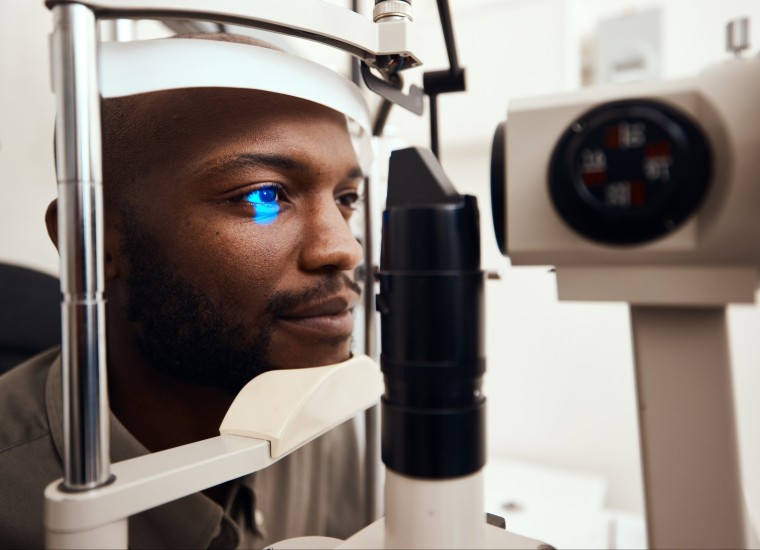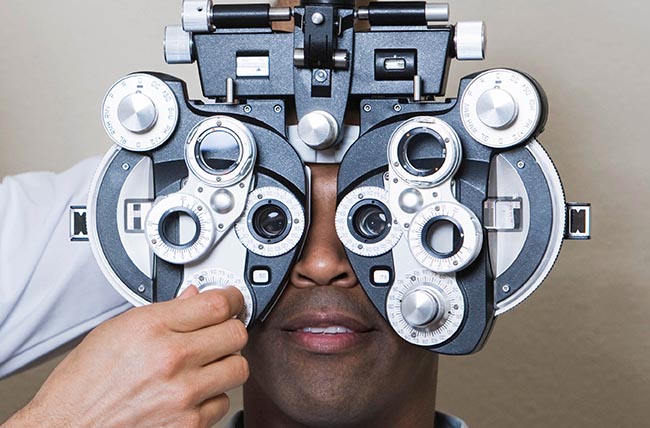Top-Rated Optometrist Riverside: Individualized Vision Solutions Await
Top-Rated Optometrist Riverside: Individualized Vision Solutions Await
Blog Article
The Comprehensive Eye Exam: What to Expect Throughout Your Visit to the Eye Doctor
A see to the eye physician for a detailed eye test is greater than a regular examination; it is a crucial action in protecting your visual health. From the initial conversation of your case history to the accuracy of the aesthetic skill test, each part of the test serves a particular function. What precisely takes place throughout the eye health analysis, and just how does it affect the prescription process? Recognizing these aspects is necessary for those who desire to keep optimum sight. As we check out each part, the significance of follow-up referrals will certainly also end up being clear.
Initial Examination
The initial examination throughout an eye exam functions as an important structure for comprehending a person's visual wellness needs. This phase sets the tone for the whole examination procedure, allowing the eye doctor to gather necessary information concerning the individual's case history, way of life, and details vision concerns. By diligently examining any type of pre-existing problems, medicines, or previous surgical treatments, the eye care expert can customize the evaluation to resolve private demands efficiently.

Moreover, the first appointment is a possibility for patients to articulate any type of worries or questions, promoting a collaborative relationship with their medical care copyright. This interaction not just ensures that the person really feels educated and comfortable but also encourages them to participate actively in their eye health and wellness monitoring. Collectively, these conversations allow the optometrist to design an individualized examination plan, making sure optimum treatment and exact diagnosis.
Visual Skill Examination
Beginning the core components of an eye evaluation, the aesthetic acuity examination is designed to evaluate the sharpness and quality of a person's vision. This essential assessment assists identify just how well an individual can discern letters or symbols at a standard range, usually using a Snellen chart (Eye Doctor). The chart comprises rows of letters that lower in dimension inside out, with the person placed at a popular range of 20 feet
During the test, the individual is asked to cover one eye and review out loud the tiniest line of letters they can see clearly. This procedure is duplicated for the other eye. The outcomes are recorded as a fraction, with 20/20 vision showing regular aesthetic acuity-- where the patient can see at 20 feet what an individual with typical vision can see at that range.
The visual skill examination likewise identifies potential refractive errors such as hyperopia, astigmatism, or myopia, which may necessitate restorative lenses. By developing a standard of aesthetic efficiency, the examination is a vital analysis tool that aids the eye care professional in creating a proper treatment plan tailored to the individual's unique aesthetic requirements.
Eye Health Assessment
Adhering to the visual skill test, an extensive eye health assessment is carried out to guarantee Resources the general wellness of the eyes. This crucial section of the eye examination involves a detailed assessment of both the exterior and inner frameworks of the eye.
Next, attention changes to the interior structures. Via the usage of ophthalmoscopy or fundus photography, the retina, optic nerve, and capillary are diligently examined. This step is essential for determining conditions such as retinal detachment, glaucoma, or diabetic retinopathy. Oftentimes, student expansion is performed to boost visibility of the interior eye structures, although this might lead to short-lived light level of sensitivity for the individual.
Additionally, intraocular stress is gauged to screen for glaucoma danger. This is typically done using tonometry, which can detect elevated pressure degrees that could recommend prospective damages to the optic nerve. Collectively, these analyses create a detailed analysis to maintain ocular health.
Refraction and Prescription
Refraction is an advanced treatment performed by eye treatment specialists to establish the specific lens power needed to remedy refractive errors such as myopia, presbyopia, hyperopia, and astigmatism. The objective of this treatment is to evaluate how light bends as it passes via the eye, enabling the practitioner to identify whether rehabilitative lenses are required for enhanced visual acuity.
During the refraction procedure, the patient is asked to browse a phoropter, a device that has various lenses. The specialist will systematically alter these lenses and ask the client to compare clarity between options up until the finest feasible vision is achieved. This treatment is critical in crafting an accurate prescription that defines the proper lens power for eyeglasses or contact lenses.
The prescription stemmed from this treatment not only optimizes vision but also functions as a foundation for picking appropriate rehabilitative eyewear. It is necessary to make sure that prescriptions are routinely updated, as changes in vision can take place over time, stressing the importance of regular eye evaluations. This careful interest to detail aids maintain clear, comfy vision in every day life.
Follow-Up Recommendations

Throughout a follow-up see, the eye medical professional will carry out a series of examinations to examine aesthetic acuity and check for any adjustments in vision that might require an update to the prescription. Furthermore, the follow-up supplies an opportunity to review any type of pain or concerns experienced with existing glasses. Adjustments can be made to guarantee comfort and efficiency, whether via lens alteration or structure modifications.
For people with recurring problems such as glaucoma, diabetes-related eye concerns, or macular deterioration, more regular follow-ups may be essential. These visits are critical for taking care of and possibly reducing the development of eye illness. Sticking to these recommendations can significantly add to maintaining aesthetic wellness and protecting against lasting issues.
Conclusion
The thorough eye exam is an essential procedure for keeping visual wellness, incorporating an in-depth assessment of case history and vision worries. Trick elements include the visual acuity test, which reviews vision quality, and the eye wellness evaluation, which examines the general problem of the eyes. Refraction examinations aid establish the precise lens prescription essential for optimal vision adjustment. Follow-up suggestions give guidance for recurring eye treatment, making sure that any type of prospective problems are attended to promptly and properly.
A see to the eye doctor for a detailed eye test is even more than a regular examination; it is a crucial action in securing hop over to here your aesthetic health.Kicking off the core elements of an eye assessment, the aesthetic skill examination is designed to evaluate the sharpness and clarity of a client's vision.Complying with the aesthetic skill test, a comprehensive eye health assessment is carried out to ensure the overall health of the eyes. These check outs allow the eye treatment professional to keep track of changes in vision, update prescriptions, and examine the overall health of the eyes. Trick components consist of the aesthetic acuity examination, which evaluates eyesight quality, and the eye wellness analysis, which examines the general problem of the eyes.
Report this page